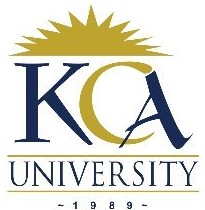 UNIVERSITY EXAMINATIONS: 2016/2017
UNIVERSITY EXAMINATIONS: 2016/2017
EXAMINATION FOR THE DIPLOMA IN BUSINESS INFORMATION
TECHNOLOGY
DBIT 306 OBJECT ORIENTED ANALYSIS AND DESIGN
SPECIAL/SUPPLEMENTARY EXAMINATION
DATE: JULY, 2017 TIME: 2 HOURS
INSTRUCTIONS: Answer any THREE questions.
QUESTION ONE
(a) Using examples, define the following terms as used in object oriented modeling.
(i) Object
(ii) Class
(iii) Polymorphism
(6 Marks)
(b) Briefly explain the difference between aggregation and generalization as used in UML
class diagrams. (4 Marks)
(c) Draw a use case diagram for the scenario below: (10 Marks)
Inventory System:
In order to generate an invoice a clerk must log in. If a clerk is a first time user, one must have
themselves registered. There should be an option for a user to register oneself within the login
page. Any user can use the system to view products online. The option of login is also provided
when a user views products
QUESTION TWO
(a) Draw a fully labeled activity diagram based on the following narrative. (14 Marks)
“A patient may visit a hospital for a checkup or for treatment. If she comes for a checkup, the
patient must provide specimen to the lab. Whether she comes for a checkup or for treatment, the
patient must meet the receptionist to record her visit. In either case, the patient must join the
waiting queue for her turn. In case of a checkup, the lab technician conducts the test and passes
the results to the doctor. If an ailment is detected, the patient must be treated otherwise she is
allowed to leave the hospital. If the patient came for treatment, then she sees the doctor for
treatment then picks her medicine from the pharmacy before she leaves the hospital.”
(b) Briefly about inheritance and explain two types of inheritance (6 Marks)
QUESTION THREE
(a) Define the term model and discuss why modeling is necessary in software design.
(4 Marks)
(b) Explain using a diagram, the following elements of an association relationship in a class
diagram: multiplicity and navigation. (4 Marks)
(c) Using an example, discuss the meaning of abstraction in software design. (4 Marks)
(d) Briefly explain the purpose of the following UML tools
(i) Deployment diagrams
(ii) Component diagrams
(iii) Sequence Diagram
(iv) Object diagram
(8 Marks)
QUESTION FOUR
(a) The following use case diagram models a scenario in a company as described by a user in
the company
From the diagram, identify
(i) Actors (2 Marks)
(ii)Use cases (3 Marks)
(iii) System name (1 Mark)
(iv) Interactions (2 Marks)
(b) Using an example, discuss the purpose and components of the UML State diagram.
(6 Marks)
(c) Using illustrations, discuss three key types of relationships that can exist between classes.
(6 Marks)
QUESTION FIVE
(a) Distinguish between
(i) an object diagram and a class diagram. (4 Marks)
(ii) Analysis phase and design phase of system development (4 Marks)
(b) State four advantages of the object oriented software design approach. (4 Marks)
(c) State four reasons why documentation is an important part of analysis. (4 Marks)
(d) Using an example, explain the following components of an activity diagram
(i) Branch (2 Marks)
(ii) Guard condition (2 Marks)
